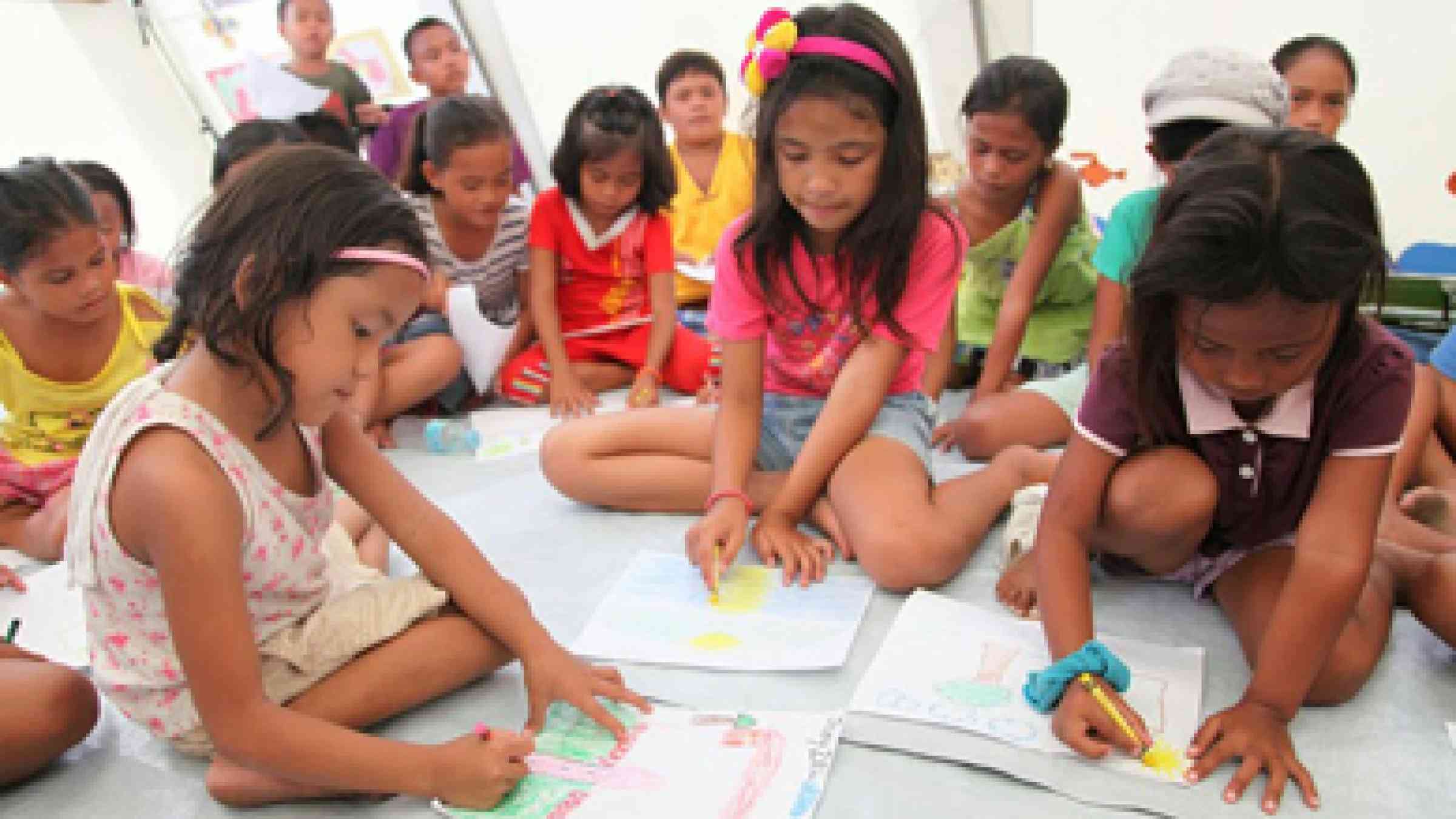UNICEF: Climate justice - The road to Sendai and Paris

By Simon Nazer
Climate change is a hot topic this part of the world. The Asia-Pacific region is one of the most disaster-prone in the world, with 10 of the world’s 15 most at-risk countries. Due to climate change, these disasters are increasingly more severe and more frequent. Super Typhoon Haiyan in November 2013 was the most powerful storm ever recorded and left a trail of devastation in the Philippines which communities are still recovering from.
Last night at the Foreign Correspondents Club of Thailand, in Bangkok, UNICEF Regional Emergency Advisor Carmen van Heese took part in a panel discussion on climate change and disasters. The talk, in front of an audience of journalists, came one month ahead of the high-level World Conference on Disaster Risk Reduction in Sendai, Japan (14-18 March).
Al Jazeera’s Veronica Pedrosa, who facilitated the event, spoke of the impact climate change made on her life. Veronica’s family hails from Tacloban, Philippines, which felt the full force of Typhoon Haiyan. It was estimated that 90 per cent of the city was destroyed.
Returning home to report on the devastation she was struck by what she saw: “Everything was gone. A boat was laying in the centre of a village, a long way from water, onto which somebody had written ‘climate justice’. It’s a reality that people want their governments to do something about this.”
UNICEF’s response
It is estimated that Haiyan alone affected some 14 million people, of whom 6 million were children. In addition, children are among the most vulnerable people affected by disasters and their daily routines may come to a complete stop. Child well being is immediately jeopardized and their abilities for longer term growth and development are interrupted because education, health services, safety, and clean water facilities are interrupted.
Working closely with the Government and other agencies, UNICEF undertook a huge response to get children’s lives back on track in the Philippines. Yet in addition to ensuring immediate response, Carmen argued that more investment should go into being better prepared for such disasters: “A key thing is how to get back to normalcy and get back on track. How quickly this happens after a disaster depends on what we do in terms of preparedness beforehand."
"If schools, for example, can quickly get up and running again, children can continue their education as quickly as possible and be together again. It’s amazing how, after a disaster, children can bounce back and can together overcome trauma.”
Immediate response remains a key part of UNICEF’s work, said Carmen, and that work ensures better preparation for future disasters which ensures the right structures are in place in help communities. Without these structures, disasters can cause a heavy toll. “Three months after Haiyan struck I went to Tacloban,” Carmen continued. “I spoke to a mother who told me ‘we have storms all the time, we didn’t think it was going to be that bad.’ They had insufficient or no information about what was coming their way; information would have empowered them to do something. They were lucky; they stayed at home but survived.”
Schools were also unprepared: “Teachers told me how they weren’t ready for such an event,” Carmen told journalists. “They also highlighted the lack of awareness and complacency as every year storms hit. But they just weren’t ready. Schools were unable to withstand the storm and were destroyed.”
To be better prepared, UNICEF is working closely with governments in disaster-prone countries like the Philippines with initiatives such as the safe school concept. This initiative promotes standards that build schools that can withstand storms, trains teachers on life skills that raise awareness about disasters and how to correctly respond to crises, and prepares children with evacuation drills.
And lessons were being learned. Only a year after Haiyan, better preparedness was already evident: “During typhoon Hagupit, which wasn’t as big as Haiyan but was only a year later, there was a huge action. Two million people were evacuated, schools were closed, and there was better information. That demonstrated that the people and the Government were better prepared.”
The panel included David Ganz from the Asian Disaster Preparedness Center and Danny Marks, an expert on climate policy. All the panelists agreed that it was a critical year ahead. David spoke about the science behind climate change and how a low-carbon future could come about, while Danny called this year a ‘last chance’ to come up with an effective action plan for reducing carbon emissions. He also highlighted the fact that those most affected tend to be the poorest and most vulnerable.
The upcoming World Conference on Disaster Risk Reduction in Sendai next month will map out a post-2015 framework for disaster risk reduction across the globe. Governments, stakeholders and the public will come together to strengthen a growing consensus that development planning and preparedness should be interlinked.
Then, from 30 November this year, the next UN Climate Change Conference will take place in Paris. The aim is to set binding global agreements on reducing carbon emissions to ensure global temperatures stay below 2C, identified as the tipping point for irreversible climate change. Much of what comes out of Paris will inform targets in the post-2015 Sustainable Development Goals, which also calls for urgent action on combating climate change.
Carmen ended with a strong call to action. “We might not be able to reduce natural hazards, but we can reduce people’s vulnerability to them,” she said. “We need to do much more on preparedness. From a moral point of view, to avoid unnecessary suffering and loss of lives, we need to support families and government partners to increase the capacities to respond.”
Simon Nazer is Communication Consultant for UNICEF East Asia and Pacific.